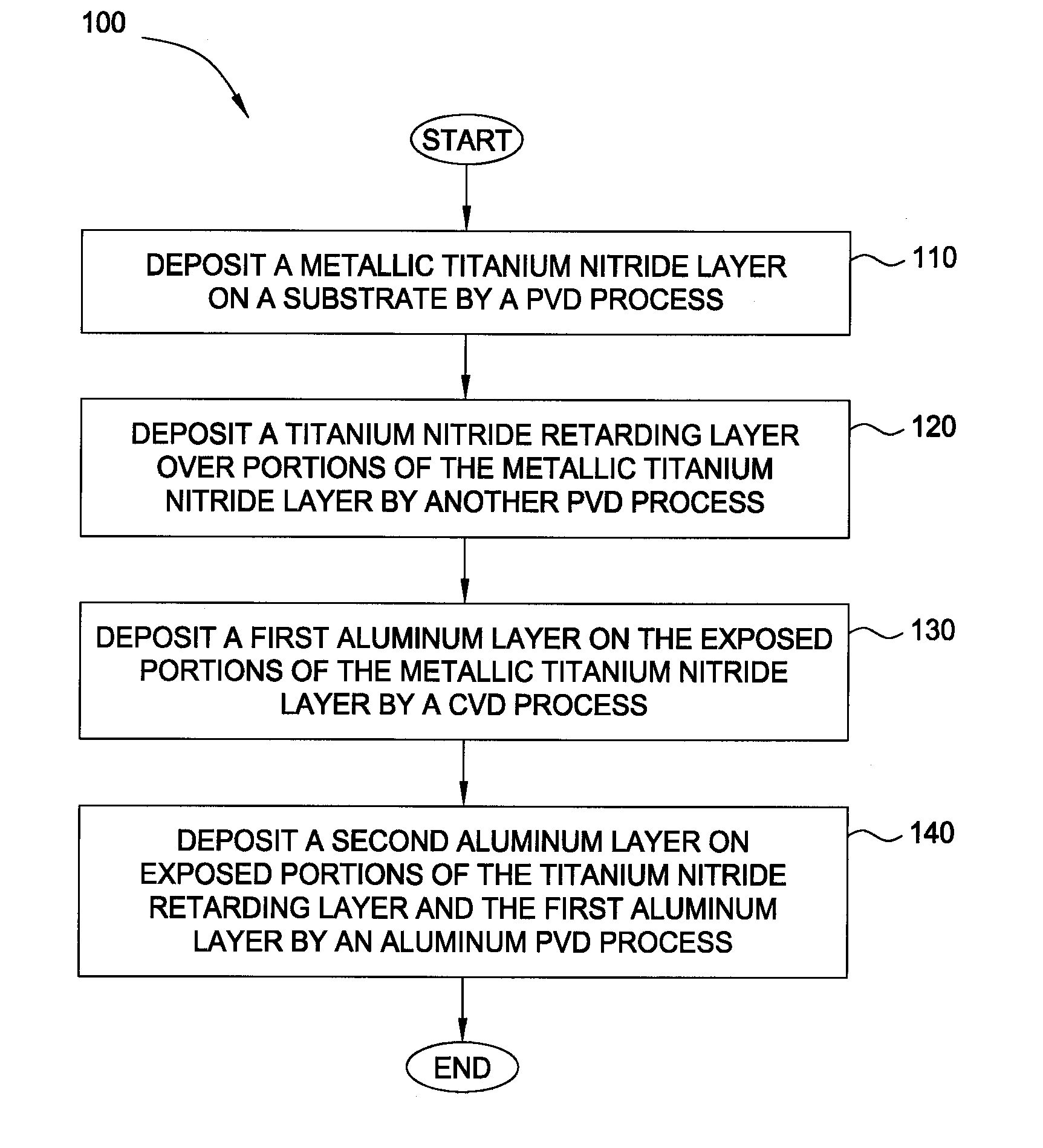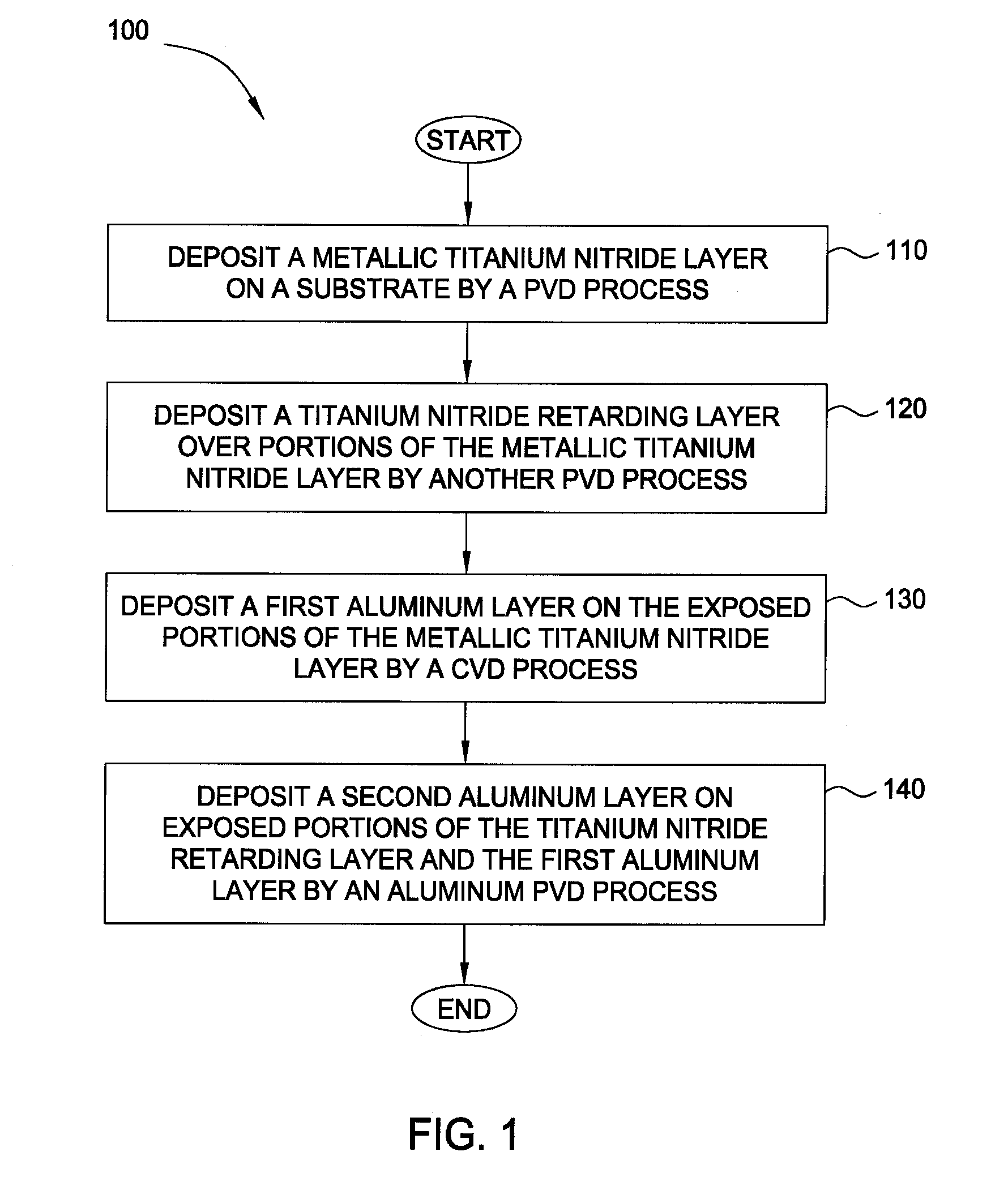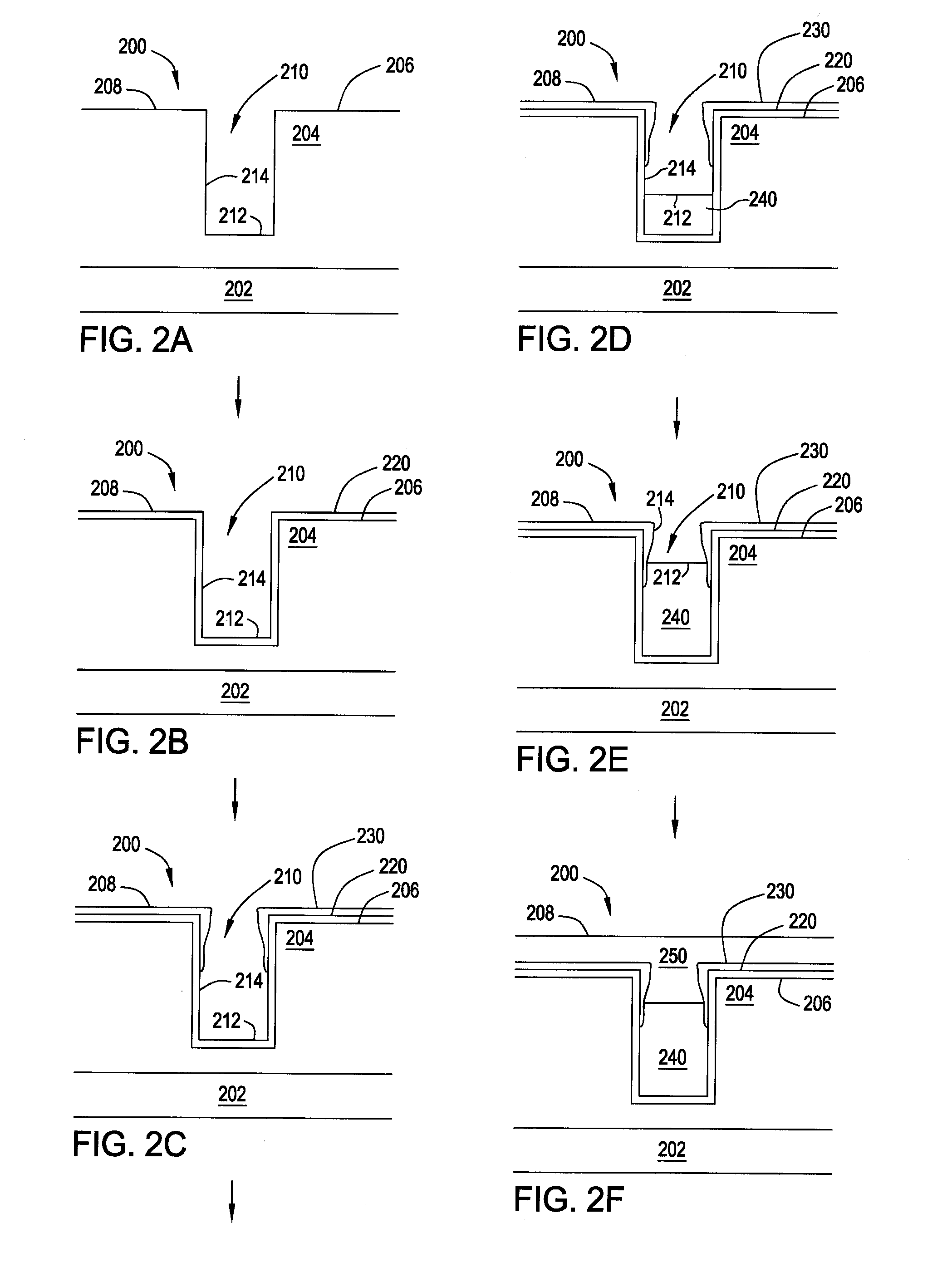Deposition processes for titanium nitride barrier and aluminum
a technology of titanium nitride and aluminum, which is applied in the direction of resistive material coating, plasma technique, solid-state devices, etc., can solve the problems of increasing resistivity, affecting other material layers, and degrading the resulting integrated circuit, so as to increase the nitrogen gas flow and reduce the dc power
- Summary
- Abstract
- Description
- Claims
- Application Information
AI Technical Summary
Benefits of technology
Problems solved by technology
Method used
Image
Examples
Embodiment Construction
[0029]Embodiments described herein provide a method for forming two titanium nitride materials by different PVD processes, such that a metallic titanium nitride layer is initially formed on a substrate and a titanium nitride retarding layer is formed over at least a portion of the metallic titanium nitride layer. The titanium nitride retarding layer is primarily deposited across the field of the substrate and minimally deposited, if at all, within any exposed apertures contained on the substrate. Subsequently, an aluminum seed layer may be selectively deposited on exposed portions of the metallic titanium nitride layer by a CVD process, preferably, a MOCVD process. Thereafter, an aluminum bulk layer may be deposited on exposed portions of the aluminum seed layer and the titanium nitride retarding layer during an aluminum PVD process.
[0030]In one embodiment, a method for forming a conductive material on a substrate is provided which includes positioning the substrate within a process...
PUM
| Property | Measurement | Unit |
|---|---|---|
| power | aaaaa | aaaaa |
| power | aaaaa | aaaaa |
| power | aaaaa | aaaaa |
Abstract
Description
Claims
Application Information
 Login to View More
Login to View More - R&D
- Intellectual Property
- Life Sciences
- Materials
- Tech Scout
- Unparalleled Data Quality
- Higher Quality Content
- 60% Fewer Hallucinations
Browse by: Latest US Patents, China's latest patents, Technical Efficacy Thesaurus, Application Domain, Technology Topic, Popular Technical Reports.
© 2025 PatSnap. All rights reserved.Legal|Privacy policy|Modern Slavery Act Transparency Statement|Sitemap|About US| Contact US: help@patsnap.com



